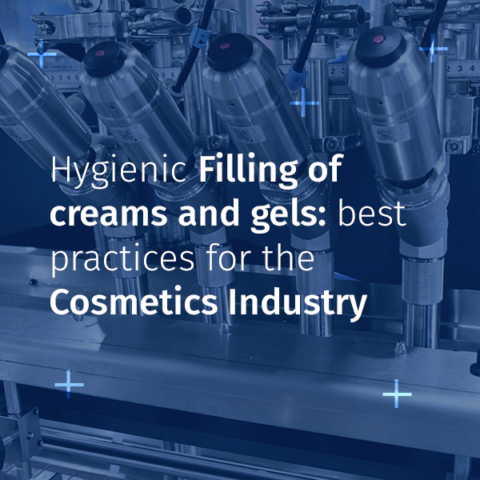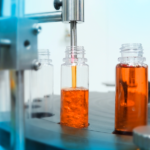In the cosmetics industry, filling creams, gels, and other semi-viscous formulas requires strict hygiene and quality standards. Poor handling during this process can compromise product integrity, lead to raw material waste, and harm your brand image.
1. Choose the right filling equipment
Selecting the proper machine is essential for efficient, reliable filling.
For variable-viscosity products such as lotions, creams, balms, and gels, it’s best to opt for:
- Piston or pump fillers to handle thick or fluid textures.
- Foam-compatible systems to prevent overflows.
- 316L stainless steel product circuits, offering maximum resistance to cleaning chemicals and hygienic protocols.
At CDA, we offer several models to meet these needs:
- K-Net: Semi-automatic filler, ideal for small to medium production runs.
- K-Net Auto: Automatic filler for medium to high speeds, usable as a standalone unit or integrated into a line.
- K-Line: Fully guarded automatic filler designed for higher speeds and full in-line integration.
2. Implement an efficient cleaning process
Every product-contact component pipes, pumps, nozzles must be thoroughly cleaned.
Cleaning time directly affects productivity and ROI, so it’s important to choose equipment designed for quick, easy sanitation to minimize downtime.
3. Maintain precise dosing
Accurate fill volumes are critical for regulatory compliance and consistent quality.
Fine adjustments and specialized tooling help achieve regular, homogeneous filling with minimal variation between containers.
4. Work with compatible containers
Your filler must be suited to the type and size of containers you use.
A perfect match between packaging and machine ensures hygienic operation, reduces product loss, and avoids spillage.
Conclusion
Hygienic filling of creams and gels is built on three pillars: appropriate equipment, a controlled environment, and strict protocols.
At CDA, our fillers including the K-Net, K-Net Auto, and K-Line are engineered to handle even the most challenging cosmetic formulas with precision, hygiene, and reliability, whether for small laboratories or industrial-scale production.







